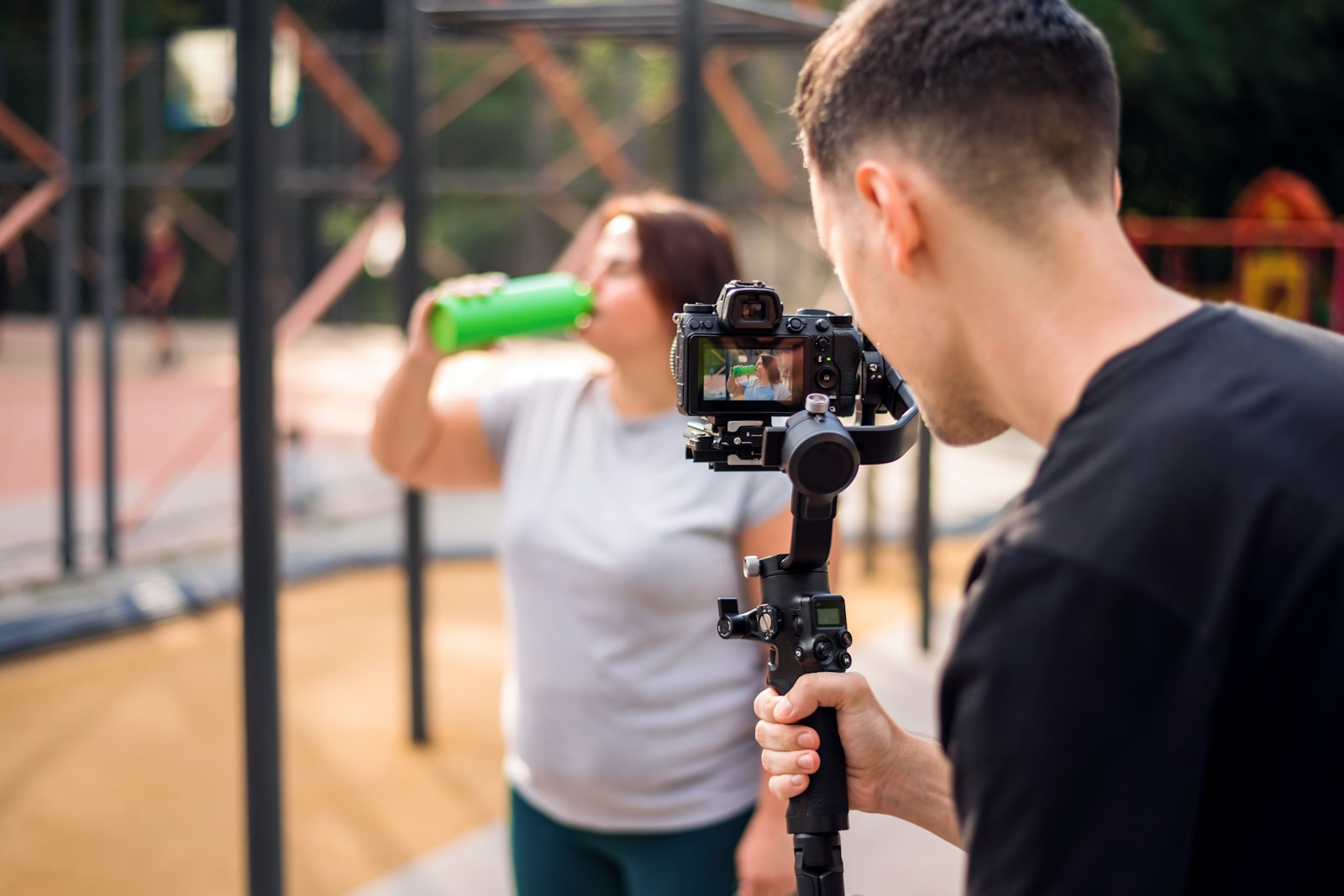
Composition Rules and When to Break Them for Stylistic Effect
Composition is the foundation of impactful visuals. For anyone producing video, understanding composition rules shapes your ability to communicate narrative, emotion, and purpose with clarity. Yet, rules exist not to constrain creativity but to provide guidelines that, when broken intentionally, produce powerful stylistic effects. This balance is where true visual mastery emerges.
Rule of Thirds
The rule of thirds divides your frame into nine equal parts using two horizontal and two vertical lines. By placing subjects along these lines or at their intersections, you create balanced, dynamic visuals that draw the viewer’s eye naturally. This principle is used widely in producing video interviews, documentaries, and branded content to ensure subjects appear intentionally positioned and aesthetically pleasing. Its effectiveness lies in the psychological comfort viewers feel when an image follows natural visual patterns, allowing the subject to stand out without appearing forced.
Breaking the rule of thirds is equally strategic. By centering your subject, you evoke emphasis and power or create unsettling tension depending on context. Producing video that centres a person directly can build symmetry and command attention in branding, or generate discomfort and isolation in thriller cinematography. The key lies in intentional use – knowing when to reject thirds to produce stylistic dominance, emotional nuance, or psychological unease that enhances your narrative purposefully.
Leading Lines
Leading lines are one of the strongest composition tools in producing video. These lines – roads, fences, rivers, or architectural elements – guide the viewer’s eyes toward the focal point, adding flow and narrative clarity. They create depth and immersion, enhancing how scenes are experienced and understood. In corporate videos, event highlights, or travel content, leading lines direct attention seamlessly through each shot, ensuring that viewers engage with the story visually before even processing the spoken message.
Breaking leading lines intentionally creates striking effects. By ignoring or disrupting natural lines, you introduce disorientation, tension, or abstraction into your visuals. Producing video with disrupted leading lines is often used in experimental cinematography, fashion reels, or conceptual brand videos to evoke complex emotions, unpredictability, or surreal atmospheres. Such stylistic disruption challenges expectations, holding viewer attention by engaging them in interpretation rather than passive reception.
Headroom and Look Room
Headroom is the space above a subject’s head, and look room is the space in the direction they face or move. Providing balanced headroom and look room creates natural framing, ensuring viewers feel comfortable watching your content. Producing video with correct headroom and look room is fundamental in interviews, educational explainers, and corporate messaging, portraying professionalism, clarity, and respectful framing that honours your subject.
However, breaking this rule strategically can transform emotional tone. Tight cropping that cuts headroom or look room induces claustrophobia, discomfort, or intense focus on facial expressions and micro-emotions. Producing video with this technique is common in psychological thrillers or activist campaigns to generate urgency, tension, or intimate connection. Such choices amplify narrative impact by using framing to communicate psychological states without relying solely on dialogue or narration.
Symmetry
Symmetry creates balanced, harmonious compositions by mirroring visual elements across a central axis. It delivers calmness, stability, and aesthetic satisfaction, making it widely used in architectural and branding visuals. Producing video with symmetry conveys order, precision, and elegance – ideal for luxury brands, corporate identity content, or educational videos aiming for clear and structured communication. It ensures viewers focus on the intended subject without visual distraction.
Breaking symmetry subtly produces compelling results. Slightly offsetting symmetry introduces dynamic imbalance, generating visual tension that retains attention longer. Producing video with this approach is powerful for storytelling where disruption or change is thematically relevant. A scene where a character is placed slightly off-centre despite an otherwise symmetrical frame conveys unresolved conflict or complexity, adding psychological depth to your visuals.
Depth and Layers
Depth involves using foreground, subject, and background to build dimensionality in a two-dimensional frame, creating immersive visuals. This principle enhances realism and context in producing video by placing viewers within the scene rather than outside it. Layering elements allows richer storytelling, showing relationships between different parts of your environment, and is key in nature documentaries, cinematic B-roll, or high-end promotional videos.
Breaking depth for stylistic effect involves flattening your image intentionally, eliminating visual layering to create abstraction or graphic aesthetics. Producing video with flat compositions is common in editorial fashion, conceptual branding, or minimalist social media content, emphasising shape, colour, and pattern over dimensional realism. This approach transforms videos into stylistic visual art, delivering strong brand aesthetics and differentiating content in competitive markets.
Framing Within Frames
Framing within frames involves using doorways, windows, arches, or environmental structures to enclose your subject, adding context and directing attention effectively. Producing video with this technique suggests layered narratives, creating a “scene within a scene” effect that captivates viewers. It is widely used in interviews, vlogs, and cinematic scenes to add storytelling depth while keeping compositions neat and focused.
Breaking framing within frames involves allowing subjects to spill out of their natural enclosures, symbolising freedom, chaos, or rebellion. Producing video with such compositions portrays your subject as uncontainable, dynamic, or unbound by their environment. This effect is ideal for brand narratives centred on innovation, social change, or artistic freedom, as it visually represents breaking boundaries without needing verbal explanation.
Negative Space
Negative space is the empty area around your subject, creating emphasis and isolation by contrast. Producing video with effective negative space conveys calm, minimalism, or focus, making it a powerful tool in luxury branding, emotional storytelling, and motivational content. It ensures viewers know exactly where to focus, eliminating clutter and cognitive overwhelm.
Breaking negative space by filling the frame completely changes the visual narrative. Producing video with full-frame compositions creates intimacy, overwhelm, or vibrancy depending on context. Close-up shots with minimal empty space can evoke closeness or intensity in interviews, while busy compositions communicate bustling environments or complex stories in documentary work. Both applications keep viewers visually engaged through intentional design choices.
Producing video that stands out requires mastery of composition rules and the creativity to break them for stylistic effect. These guidelines are not rigid laws but tools to communicate narrative, emotion, and brand identity with precision and artistry. Balancing structure with intentional disruption elevates your visual storytelling and ensures content remains impactful and memorable.
If you want to take your next production further, contact us at Sound Idea Digital. We combine strategic composition with decades of producing video experience to deliver high-quality content that achieves your goals with meaning and style.



